grumpy
Well-known member
I just picked a small bucket for this demo. I used a 3/4" spade bit to drill the hole.
The thin walls of these smaller buckets make them suseptable to leaking.
NOTE: All pipe and fittings are 1/2" Schedule 40 PVC
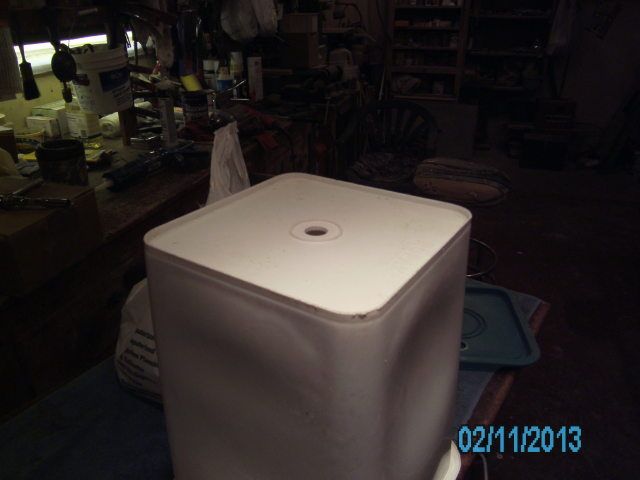
The nipple is a threaded male end with a garden hose washer on it.
I added a little silicone sealer around the edge to make sure it was water tight.
The PVC is harder than the bucket material. It will self-thread into the hole.
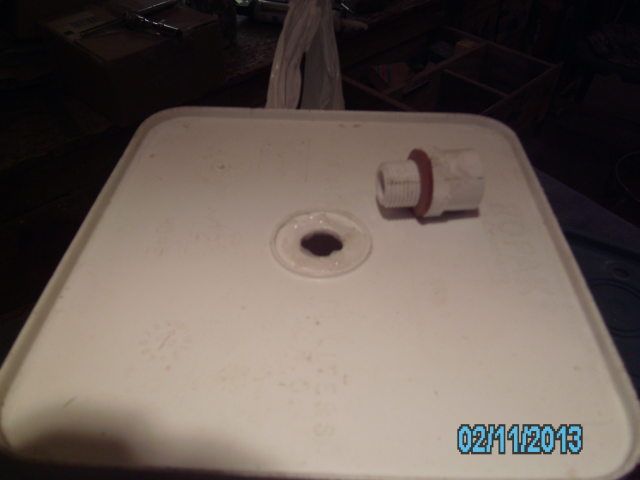
You must use a fair amount of pressure to do so.
Here's a pic with the nipple threaded into the bottom of the bucket.
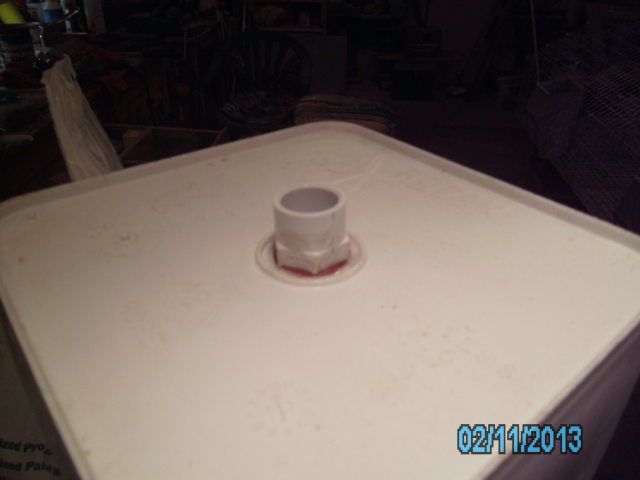
Here's the materials needed to make the system. I have two 10' lengths of pipe also.
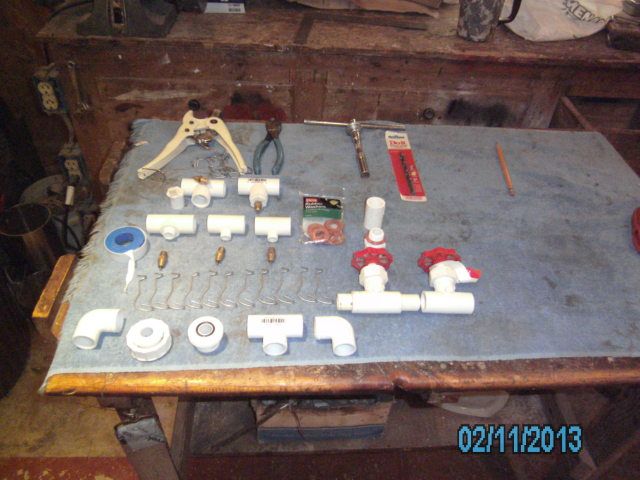
Eight inches up from the floor, remove the wire to give you a 2"X2" opening.
Each side panel must have this done to slide the pipe and nipples through.
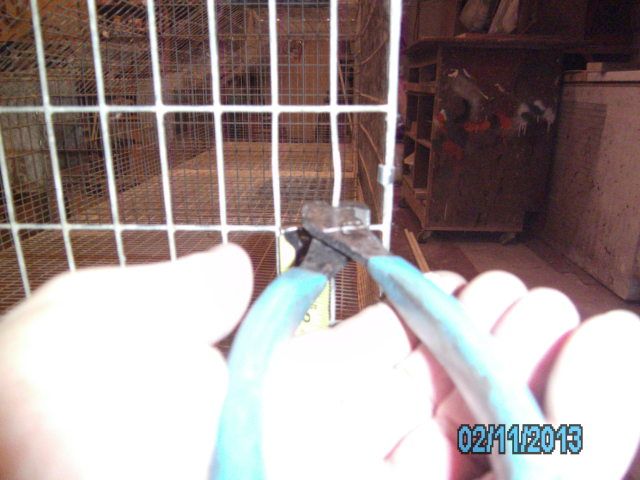
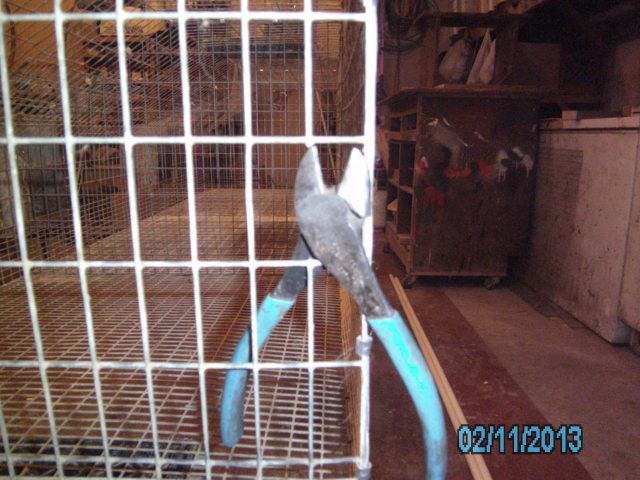
Center each water "T" on each section. Cut the pipe to fit, add an extra inch for gluing.
Lock the sections in place with the pipe holders. Line up all T's the same.
You can use a marker to make sure they'll be lined up when you glue them.
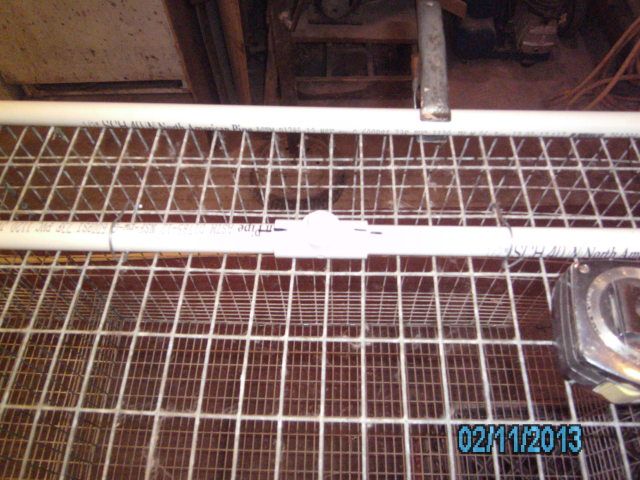
Glue the entire length together. Keep all of your marks in line.
Install the line into the cages and use your wire clips to hold it in place.
Make sure you've got a slight angle down on your T's.
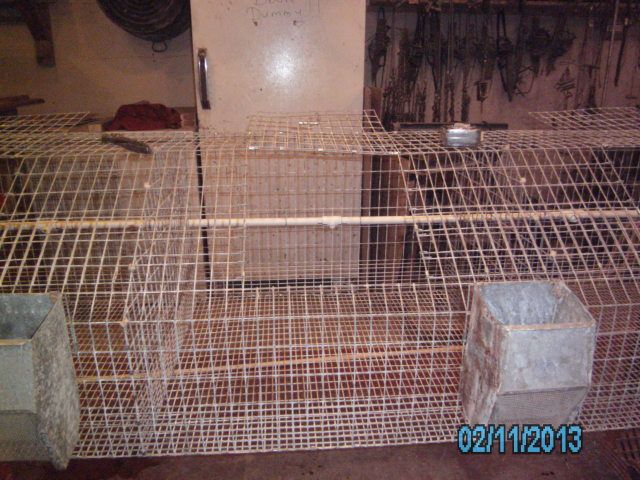
You can turn the water line to pick-up another row of cages.
Or you can put a drain valve in along with your return line.
BTW::Those drain valves are excellent for filling up auxillary water bottles that you can attach to the cages when the youngsters begin coming out of the nest boxes.
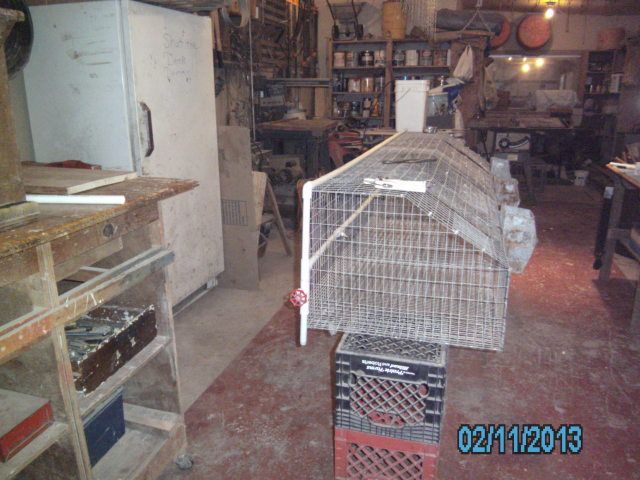
Install your water nipples. Be careful not to cross-thread them.
Add a winding or two of teflon tape to the threads. It takes a 7/16"
socket to tighten them. DON'T OVER-TIGHTEN.
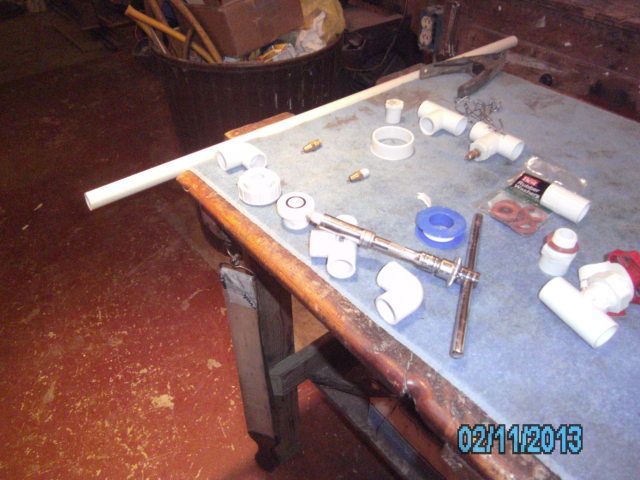
Build a stand or closet for your water bucket. Install a shut-off valve.
I use a coupling to attach the water line from the bucket to the
water line in the cages.
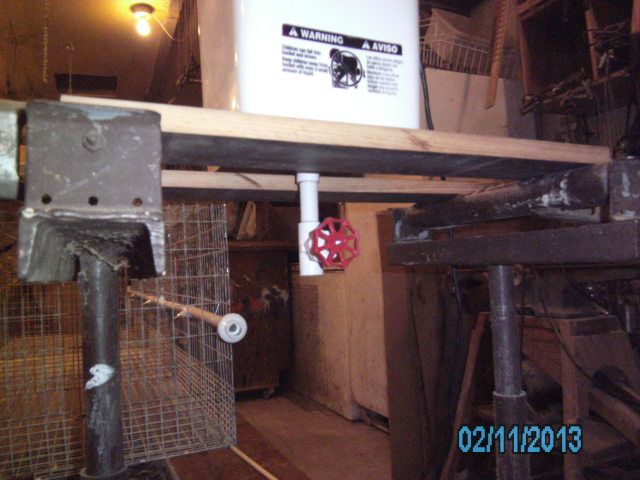
Here's the pump with a threaded female adapter attached. Use a small pipe
nipple to attach to the coupling in the bottom of the bucket.
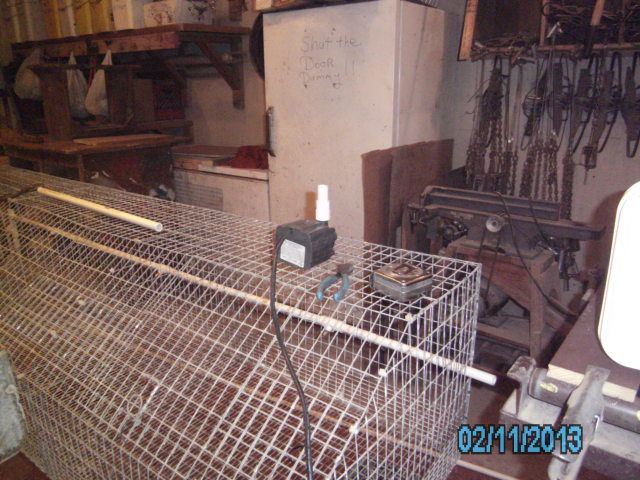
The pump is in place in the bucket. Sorry for the crappy pic.
It didn't turn out too good.
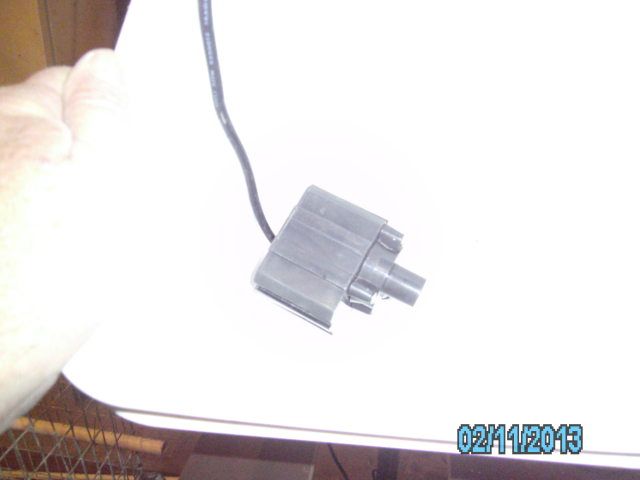
Water return line is hooked up and glued. Almost ready!!
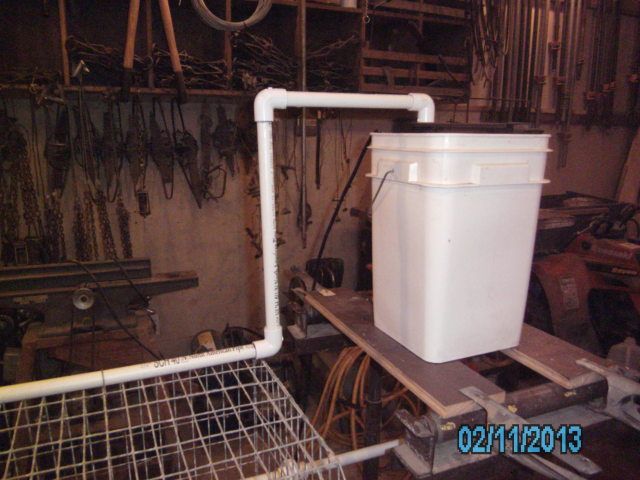
Water is in the bucket. Pump is turned on! We're off and running.
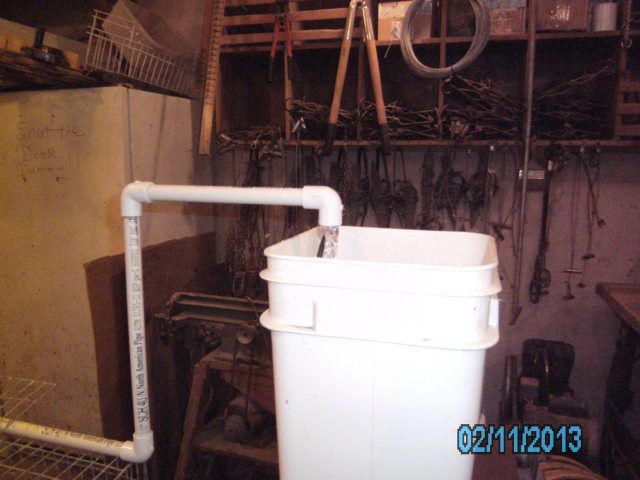
Good water pressure on the water valves.
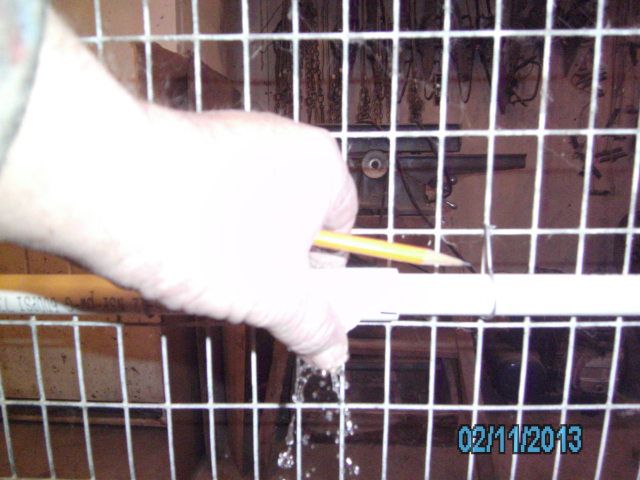
Boots says "Hello". She's a big girl now!
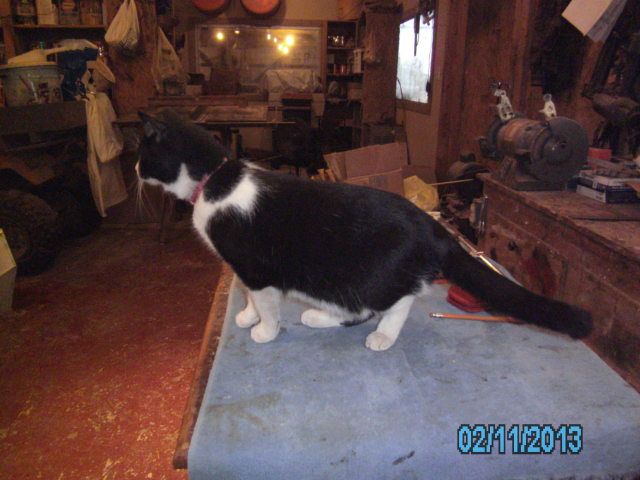
Hope this helps some of you. Any questions feel free to ask. I'll do my
very best to answer them.
Grumpy.
The thin walls of these smaller buckets make them suseptable to leaking.
NOTE: All pipe and fittings are 1/2" Schedule 40 PVC

The nipple is a threaded male end with a garden hose washer on it.
I added a little silicone sealer around the edge to make sure it was water tight.
The PVC is harder than the bucket material. It will self-thread into the hole.

You must use a fair amount of pressure to do so.
Here's a pic with the nipple threaded into the bottom of the bucket.

Here's the materials needed to make the system. I have two 10' lengths of pipe also.

Eight inches up from the floor, remove the wire to give you a 2"X2" opening.
Each side panel must have this done to slide the pipe and nipples through.


Center each water "T" on each section. Cut the pipe to fit, add an extra inch for gluing.
Lock the sections in place with the pipe holders. Line up all T's the same.
You can use a marker to make sure they'll be lined up when you glue them.

Glue the entire length together. Keep all of your marks in line.
Install the line into the cages and use your wire clips to hold it in place.
Make sure you've got a slight angle down on your T's.

You can turn the water line to pick-up another row of cages.
Or you can put a drain valve in along with your return line.
BTW::Those drain valves are excellent for filling up auxillary water bottles that you can attach to the cages when the youngsters begin coming out of the nest boxes.

Install your water nipples. Be careful not to cross-thread them.
Add a winding or two of teflon tape to the threads. It takes a 7/16"
socket to tighten them. DON'T OVER-TIGHTEN.

Build a stand or closet for your water bucket. Install a shut-off valve.
I use a coupling to attach the water line from the bucket to the
water line in the cages.

Here's the pump with a threaded female adapter attached. Use a small pipe
nipple to attach to the coupling in the bottom of the bucket.

The pump is in place in the bucket. Sorry for the crappy pic.
It didn't turn out too good.

Water return line is hooked up and glued. Almost ready!!

Water is in the bucket. Pump is turned on! We're off and running.

Good water pressure on the water valves.

Boots says "Hello". She's a big girl now!

Hope this helps some of you. Any questions feel free to ask. I'll do my
very best to answer them.
Grumpy.




